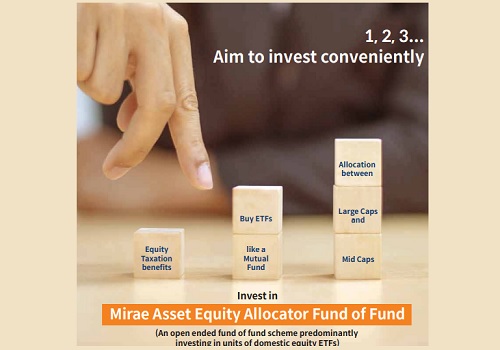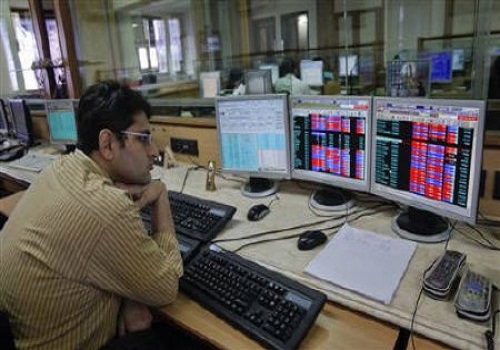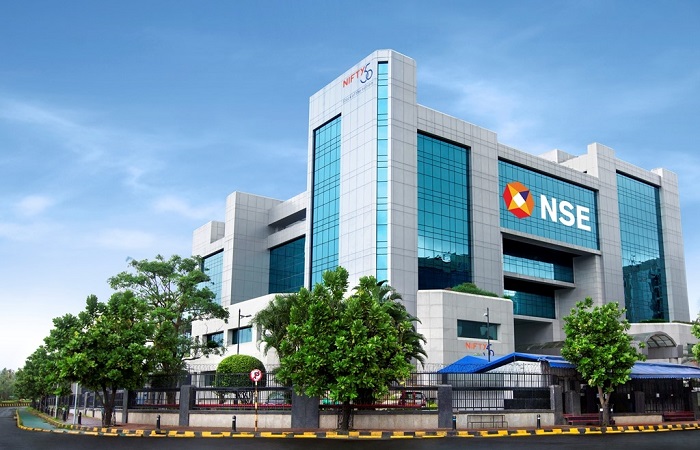Monthly Equity Insight By Mirae Asset Management Company

* Nifty 50 (-2.4%) moved down sharply in the last few days of January primarily due to US based research report on a big conglomerate in India. Markets were concerned about its collateral impact on banking sector. The 3QFY23 results were broadly in-line despite weak earnings from global commodity sectors, as Autos and Banks beat estimates.
* Sector-wise, Power (-11%), Oil & Gas (-9%) and Bank (-6%) indices declined the most, while Auto (+5%), IT (+3%) and Metals (+1%) gained the most.
* Globally, most of the markets ended with positive returns; Hong Kong, Shanghai and US S&P 500 gained 10%, 5% and 5%, respectively. Indian markets were the under-performing markets globally.
Global Macros - China announced reopening after 3 years of COVID restrictions. This is expected to revive near-term economic outlook.
- The Federal Open Market Committee raised its benchmark rate by 25 basis points to a target range of 4.5%-4.75%. It was the Fed’s smallest rate hike since March 2022, when it began its campaign to control inflation.
- The US 10-year bond yield contracted 37 bps during the month to end at 3.51%.
- The Bank of Japan maintained its policy rate at (-)0.1% and surprised markets by not tweaking the range for the 10-year yield fluctuations following a surprise move of +/- 50 bps in the previous meeting. - The World Bank slashed its growth forecasts for most countries and regions and warned that new adverse shocks could tip the global economy into a recession.
- Dated Brent crude spot price increased marginally to US$85.4/bbl from US$85.0/bbl and future prices declined to US$84.5/bbl from US$85.9/bbl.
Domestic Macros
* Growth: India's manufacturing sector activity moderated in January amid a slower increase in total sales. PMI (Purchasing Managers’ Index) fell from December's recent high of 57.8 to 55.4 in January, as factory orders and production rose at a slower rate. Services PMI fell from 58.5 in December to 57.2 in January, although the latest figure remained above its long-run average (53.5) and indicated a sharp rate of growth. The upturn was associated with favourable demand conditions.
* Credit Growth: As per latest RBI data, system credit growth stood at a healthy 16.5% YoY for the fortnight ended Jan 13th 2023.
* Inflation/policy: Inflation has peaked and due to base effects, has started to moderate. December CPI inflation moderated further to 5.72% (12 month low) from 5.88% in November led again by a fall in vegetable prices. Wholesale Price Index inflation slowed further to 4.95% from 5.8% in November led by a moderation in primary articles and food even as fuel and power inflation increased.
* Currency: USD-INR appreciated on a month-on-month basis aided mainly by weaker US Dollar even as crude oil prices remained volatile. Overall, the INR has appreciated by around 1.4% in January.
* GST Collection: The gross GST revenue collection for the month of January 2023 accounted for Rs. 1,55,922 Crore (second highest ever). The revenues are up by 24% for the current financial year up to Jan 2023 vs. the same period last year.
Regulatory, policy and market developments
* Equity trading trends: FPI outflows in secondary market stood at US$3.7 billion & DII inflows in secondary market at US$4.1 billion.
* FY24 Union Budget: The FY2024 union budget has done a fine balancing act between (1) fiscal consolidation, (2) increasing attractiveness of the new personal income tax regime and (3) continued higher capital expenditure to achieve higher medium-term GDP growth. It has targeted central GFD/GDP (Gross Fiscal Deficit/Gross Domestic Product) at 5.9% in FY2024BE* (6.4% in FY2023RE*), staying on course to reach the targeted 4.5% by FY2026. The government has rationalized the high subsidies on food and fertilizer and the elevated rural spending seen during the pandemic. Government borrowing has been maintained at a comfortable level, which should keep interest rates in check.
*BE- Budgeted Estimates, RE- Revised Estimates
3QFY23 interim results:
• Nifty 50 interim earnings are broadly in-line despite miss in global commodity sectors.
• Profits of the 35 Nifty 50 companies (~70% of Nifty earnings) that have declared results so far have risen by 18% YoY (largely in-line), fuelled by financials. Excluding these, profits would have grown by 12% YoY. Further, Nifty profits would have increased by 28% YoY, excluding Metals and Oil & Gas.
Sector-wise summary
* Technology: In-line with expectations despite the 3QFY23 seasonality coupled with looming macro uncertainties. Large caps have outperformed in 3Q both in terms of topline growth and margins.
* Banks: Earnings upcycle continues for the banking sector with most banks reporting robust margin expansion while asset quality continues to improve. Advances growth has been healthy at 4-5% QoQ.
* Automobiles: The initial set of results has been encouraging with almost all the companies exceeding estimates. The key trends are: a) a strong mix leading to a sharp beat on Average Selling Price, b) full benefit of commodities, and c) Foreign exchange gains.
* Consumer: A clear divergence has been visible between staples and discretionary performances in the results declared so far. While expectations were admittedly low from staples owing to weak rural demand in 3Q and a delay in commodity cost decline, the overall expectations have largely been met. However, discretionary has disappointed owing to urban slowdown post festive season.
To Read Complete Report & Disclaimer Click Here
Above views are of the author and not of the website kindly read disclaimer

















